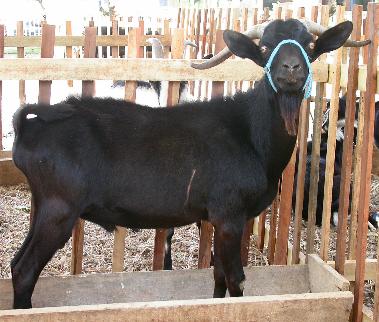Type the name of the breed you're looking for below
[wpdreams_ajaxsearchlite] Don't see the breed your're looking for? Click here and let us know!
Murcia-Granada goat
| Place of Origin | Spain |
| Origin | Also Known by: Granadina, Murciano-Granadina The Murcia-Granada goat is a native breed originated in the southeast of Spain (Murcia, Almería, Granada and Alicante). Some years ago it was introduced to Argentina, Brazil, Mexico and Venezuela. Animal have also been exported to North Africa. In Spain it has been selected for rusticity, high performance and for its excellent milk production. They were bred for two main traits, milk production and its ability to continue this production in dry and nutrient poor regions. They have been introduced into several areas in Latin America as well as northern Africa. |
| Purpose | Milk |
| Characteristics | The Murcia-Granada has a small-medium size with a liveweight near 30-50 kg (90 lb)for females and 50-60 kg (120 lb) for males. It has a uniform black to brown colour skin and hair. Females have short and thin hair but longer and stronger in males. Males have usually pronounced beard and are horned. The ears are of medium size and erect. The tail is short and erect. The udders are large, well-shaped and with well-placed teats. The extremities are thin but solid and of medium size. Two variety are found: "Veguesi" from irrigated and flat land, and "Montana" from mountains areas. Veguesi goat is better milk producer than Montana and is larger, colouration is similar on both varieties. The Murcia-Granada is well adapted to the hot and dry conditions of the semiarid areas of southeastern Spain. It is the most productive domestic animal in this climate because of its ability to maintain a high milk production under less than ideal conditions. The Murcia-Granada flocks graze adverse terrain and feed on the by-products of the agroalimentary industry with a very good transformation index. This breed produces near 500 kg of milk in 280 days of lactation, with a composition of fat (5.3%) and protein (3.4%) better than other breeds in Mediterranean areas. Most of milk production in Spain is used for cheese production. |
| Other Considerations | Breed Organization: The responsibility for maintenance, promotion, standardization and official testing of Murcia-Granada goat belong to the "Asociación Española de Criadores de Cabras de Raza Murciano-Granadina" –ACRIMUR- (Spanish Association of Murcia-Granada Breeders). At the moment, the number of Murcia-Granada in southeast of Spain is about 400,000 animals, which 150,000 are in the region of Murcia. These goats reproduce quickly, since they do not have a particular season for breeding, and the females can come into heat at any time of the year. Usually two kids are born per breeding, and they become sexually mature around 7 to 8 months of age. |



